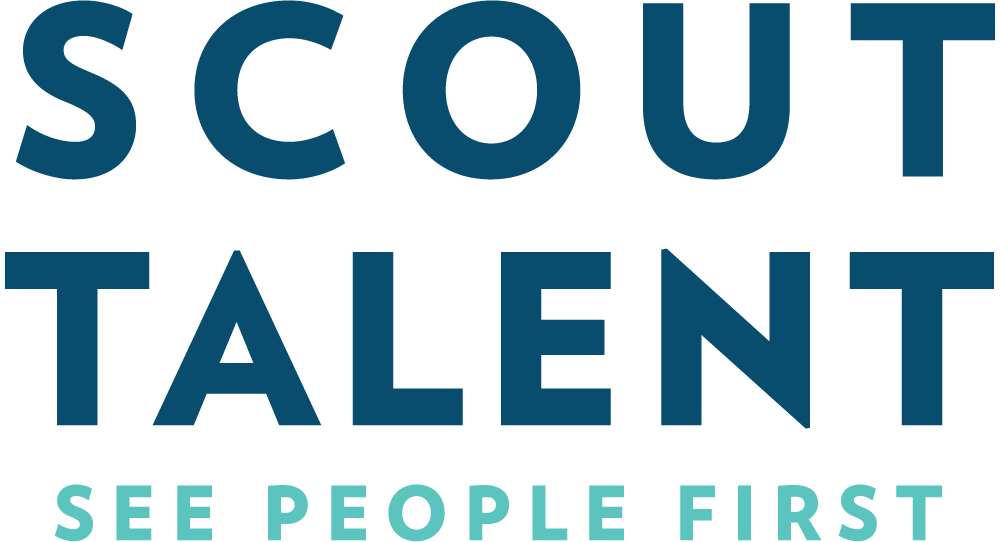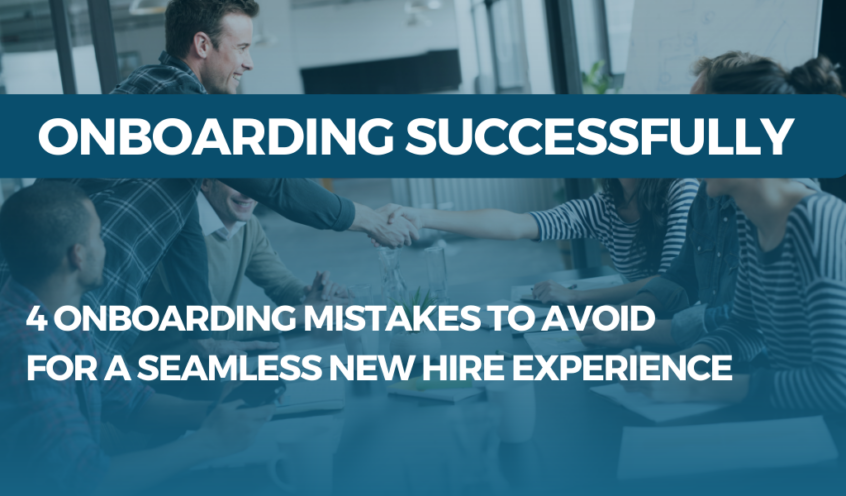It’s no secret that successfully onboarding new hires is crucial for their long-term engagement and productivity. A study shows that 70% of employees who reported having a good onboarding experience also described their job as “the best possible job”. Still, only 12% of organizations feel their company onboard well. Even though hiring managers and HR professionals are aware of the importance of a good experience when onboarding a new employee, there are still a lot of companies that do not prioritize this very important step in the hiring process.
What is Onboarding?
Onboarding is the essential process of integrating and orienting new employees into an organization or company. Its primary goal is to ensure a seamless transition for new hires, guiding them through your company’s culture, policies, and procedures while making them feel valued and connected to their new role.
How to Setup a Positive Onboarding Experience
The onboarding process is more than just welcoming a new employee to your organization. It starts when you send out the offer letter and it ends long after the new hire starts working in your company. In this fast-paced recruitment age we live in, it’s important to understand how impactful a great onboarding experience is. When a top candidate is considering accepting an offer to join your company, you’ll want to ensure they’re getting the best possible treatment out of it so they start on the right foot. Setting up a stellar induction is key for the success of your new team member. Achieve orientation excellence by doing the following:
- Be transparent with important details – ensure your new hire knows all they need to know before day one. These can include forms that need to be filled out or documents necessary for payroll and the finance team, information about dress code, parking, and who to contact if they have any questions, and anything else you can think that would help a newbie feel comfortable on their first day.
- Set them up for success – confirm with your internal team that all the accounts have been set up, such as a corporate email address, a phone number (if needed), and any training courses or learning experiences that’ll help the new person do their job more effectively and efficiently.
- Offer support – we all know how hard it is to start a new job and have no idea who to ask for information. Ensuring the new teammate has enough support to help during the first few weeks is key for building relationships and making them feel comfortable and part of the team.

Effective onboarding is a critical component of the recruitment process, and overcoming common mistakes is essential for creating a positive experience for new hires. Despite the awareness of its importance, many organizations still overlook this critical step. In this article, we will explore the top four onboarding mistakes and provide practical solutions to help companies overcome them, ensuring a positive and seamless transition for new employees.
4 Common Onboarding Mistakes and Detailed Solutions
-
Manually Entering Candidate Details: A Recipe for Errors
Unfortunately, many recruiters still do not have access to an ATS or an HRIS, making it much harder to keep track of job postings and applications coming in – especially if there are multiple roles being advertised at a time. A lot of hiring managers track applications and candidates via emails and/or in a spreadsheet making it difficult to keep up with all the resumes received and the process made in the previous day. Besides, keeping track of applications and candidates’ personal data in a spreadsheet is not only unsafe but causes room for errors, even for the most meticulous proofreaders. Such mistakes not only compromise professionalism but may also lead to misunderstandings or discrepancies that could impact the employee’s confidence and trust in the organization.
Solution: Leverage Onboarding Software for Digital Contract Creation
To help decrease the risks associated with manual data entry such as mistyping a name/email address or phone number, or to keep the data safely stored in one place, it might be time to consider an onboarding software tool. An onboarding software can automate the population of candidate details into offer letters and contracts, making your job easier and decreasing the room for mistakes. By integrating onboarding software into your recruitment process, you can ensure accurate and error-free documentation, leaving a positive impression on new hires from the start. 
-
Paper Contracts Slow Down the Onboarding Process
There are a number of reasons why sending paper contracts is inefficient and can result in bad employer branding. See them below:
- Environmental impact – Printing and signing documents contribute to paper waste, which is not environmentally friendly. Encouraging digital processes aligns with sustainability efforts and reduces your organization’s carbon footprint.
- Time and cost savings: Printing offer letters can be time-consuming and inconvenient. By adopting digital processes, new hires can review or refer to their offer details frequently.
- Efficiency and speed: Digital offer letters can be generated, sent, received, and acknowledged quickly. It eliminates delays caused by physical document handling and transportation. This expedites the onboarding process and creates a positive impression for new hires.
- Recordkeeping and security: Digital offer letters can be easily stored and organized electronically. They provide a more secure method of document storage compared to physical copies, as they can be password-protected and encrypted, reducing the risk of unauthorized access or loss.
- Remote work considerations: With the rise of remote work and distributed teams, relying on physical signatures becomes impractical. Digital offer letters enable you to seamlessly onboard employees regardless of their location.
Demanding inefficient and time-consuming tasks from candidates can create stress and consume valuable time that could be better utilized for more productive activities.
Solution: Embrace Digital Signatures and Online Contracts
Modernize your onboarding process by shifting from traditional paper-based contracts to digital alternatives. Instead of printing and signing contracts, email your candidates an online job offer and contract, allowing them to review the terms electronically. Encourage candidates to accept the role and communicate any concerns via email. Furthermore, adopting onboarding software that enables digital signatures ensures a secure and streamlined contract signing experience for both parties. 
-
Beware the Dangers of Unsecured Paper Trails
In the digital age, relying on a paper trail for employee onboarding poses security risks, inefficient data management, and adverse environmental impacts. Maintaining physical documents containing sensitive information not only increases the chances of breaches but also contributes to wasteful practices that contradict the growing emphasis on sustainability.
Solution: Embrace Cloud-based Systems for Seamless Communication and Data Security
To reduce reliance on manual and paper-based processes, prioritize the adoption of cloud-based systems that facilitate seamless communication and safe data transfer between stakeholders. These systems not only ensure the privacy and security of employees’ and organizations’ information but also allow for centralized access, enhancing collaboration and streamlining administrative tasks. Embracing those tools and systems align with sustainable practices, promoting an eco-friendly workplace.
-
Neglecting Potential First-Day Challenges for New Hires
A new hire’s first day should be a thrilling experience, with enthusiasm and energy at its peak. However, subjecting employees to administrative delays, such as delayed access to essential tools or training materials, and additional training hiccups like scheduling conflicts or inadequate training resources, can dampen their initial excitement and hinder their ability to contribute effectively. Additionally, unresolved paperwork, delayed IT setup or incomplete orientation sessions are other potential roadblocks that could adversely impact the new hire’s early experiences.
Solution: Proactive Preparation for a Seamless Start
To avoid impeding the momentum of new hires, it is crucial to proactively set them up for success by ensuring they have the necessary tools and resources well in advance. This includes providing access to software, systems, and training materials prior to their start date. By doing so, new employees can hit the ground running and channel their enthusiasm into productive contributions from day one. Onboarding new team members demands meticulous planning, efficient processes, and the right technology. By recognizing and addressing common onboarding mistakes, organizations can optimize their recruitment processes and create a positive experience for new hires. Investing in recruitment software that facilitates the digital creation and delivery of job offers and contracts, coupled with seamless acceptance by candidates, can significantly streamline the onboarding journey. Investing in an onboarding software, such as :Onboard streamlines the creation, delivery, and tracking of digital contracts and offer letters, saving time and effort. Within a few clicks, collect all the necessary onboarding information from your new hires and ensure all the data is safely stored.
To learn more about how Scout Talent can help you enhance your recruitment processes and overcome onboarding challenges, reach out to us at hello@scouttalent.io. Our team is dedicated to supporting you in achieving a seamless onboarding experience for your new hires, fostering engagement, and driving long-term success.








